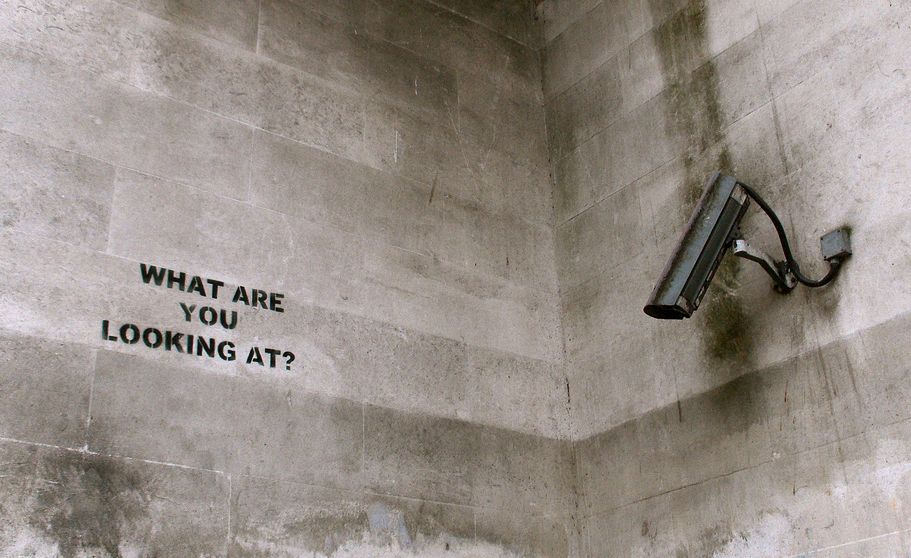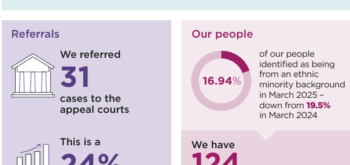The rise of the busybody: how the law became an instrument of the state
 The new criminal law is not composed of precisely delimited powers or definitions of crime. The new officials are not ‘servants of the law’. Instead, law or powers are described as ‘tools’ which allow them to do what they want to do: to stop and search, to move on, to confiscate, to ban. In policy circles a new power will be described as a ‘great new tool’: the official decides what they want to do then looks for a power that allows them to do it. The official is the subject, the law an object in their hands which they apply for their own purposes.
The new criminal law is not composed of precisely delimited powers or definitions of crime. The new officials are not ‘servants of the law’. Instead, law or powers are described as ‘tools’ which allow them to do what they want to do: to stop and search, to move on, to confiscate, to ban. In policy circles a new power will be described as a ‘great new tool’: the official decides what they want to do then looks for a power that allows them to do it. The official is the subject, the law an object in their hands which they apply for their own purposes.
More precisely, law is described as a ‘toolkit’: a new power is described as a ‘great addition to the toolkit’ or a ‘valuable part of a menu of options’. What is valued is that officials have a free hand: that in any given circumstance they have plenty of options to choose from, that they never find themselves at a loss or want to do something and cannot. This concern with choice of action shows how the criminal law has pursued the freedom of the official, their freedom of movement and action, as an end in itself. This is why the use of powers is also described as ‘creative’.
Open-ended powers have been drawn up with little thought as to how these powers will be used. The expansion of powers becomes the primary criminal-justice strategy and the answer to a wide variety of social problems. Independent social life is seen as the realm of latent criminality: anything hidden, anything free or unregulated, is latently criminal. By the same accounts the official’s intervention (or realm of intervention) has the civilising force of anti-crime or crime-prevention strategy.
The confidence in officials is not specific, justified on the basis of their personal qualities or the quality of their institution. Instead, there is a blind faith in the non-specific ‘official’ of no particular institution, only because they represent the negation of civic life. It is the negativity towards civil society which drives a blind faith in power-bearing officials.
There has been an expansion of civil powers to ‘order’. Here state power is detached from the criminal law – from the enforcement of general laws which are violated in the criminal act – and becomes a personalised mechanism for directing the behaviour of particular individuals. The powers to order are quintessential busybody powers, a matter of meddling and not law enforcement.
In the UK, there are civil injunctions (the new ASBOs), community protection notices (an on-the-spot ASBO), public spaces protection orders (an on-the-spot bylaw to ban public activities), control orders (which impose conditions on somebody suspected of terrorism), crime-prevention orders, sexual offences-prevention orders, dispersal orders (to remove people from a locality), parenting orders (which could require parents to go to counselling), football-banning orders (which ban an individual from attending football matches). In the USA there are a variety of orders which can ban individuals from particular areas of town, including private property, such as parks exclusion orders, stay out of area orders and trespass admonishments. In Australia there are prohibited-behaviour orders.
Shadow justice
Once an order is issued it has the force of law: for that individual, it becomes a criminal offence to do whatever is prohibited in the order, such as to cross a particular street, to use a particular word or to wear a cap. The order represents the breakdown of the criminal law as a standardised and predictable set of rules for the conduct of social life. Each order is a personalised intervention by the state in the conduct of an individual.
Orders become a shadow justice system, a parallel system for the use of state power which is founded on a quite different basis. These contracts and orders total tens of thousands each year. There were 4,000 community protection notices and 8,000 community protection warnings issued in one year in the UK; there are 25,000 parenting contracts issued each year. In the city of Seattle there are 10,000 trespass orders issued each year.
The criminal law itself starts to approximate the system of orders, with the deliberate creation of offences so broad as to allow the law to be invoked in almost any case. The definition of a crime is designed to be a catch-all that allows for orders to be issued in specific cases, rather than a specific description of behaviour meriting criminal sanction. Sexual-offences law, for example, means that almost everybody has committed a sexual offence: it is a crime for a 15-year-old boy to kiss his girlfriend of the same age. Law professor Andrew Ashworth says that this was a relatively conscious attempt to give prosecutors the widest latitude possible: ‘prosecutors don’t like there to be things they cannot prosecute’. Similarly, UK councils have created laws prohibiting ‘any object which could cause harm’, ‘standing in a group of two or more unless waiting at a bus stop’, and ‘shouting’. These offences cannot be enforced with any consistency, nor are they intended to be: the aim is to provide a broad remit which allows orders to be issued for people to move on or discontinue their activity.
The US legal academic William J Stuntz argues: ‘When legal doctrine makes everyone an offender, the relevant offences have no meaning independent of law enforcers’ will. The formal rule of law yields to the functional rule of official discretion.’ The will of the official becomes in itself the law.
Taken together, these changes represent a new kind of criminal law, a change in the basis of punitive powers. Modern criminal law is traditionally grounded in the unit of the autonomous individual: this is the unit from which all its forms are derived, including forms of legal procedure and definitions of crime. The definition of a crime in a modern state was: the individual act which wilfully harms or violates the liberty of another person. Whereas customary injunctions are based only on the question of obedience or disobedience, a legal code is based on the elements of responsibility, harm, and equivalence.
Criminal justice has been detached from its origins, but has not been replaced with any alternative logic. Punitive powers float unhinged on the top of society, without principles governing their use. The idea that law is a ‘tool’ suggests it is merely a detached coercive instrument, lying around, which can be picked up and used for this or that. There is nothing in the instrument which suggests that it need be used for a particular purpose. Its quality comes only from what it can ‘do’ (i.e. the specific restrictions it can induce); the question of its use is left entirely open. The means of coercion have become separated from any system governing the use of that coercion, which is to say from social relations and determination.
Law has collapsed into the subjectivity of officials: there is nothing standing over their heads, judging and holding them to account. Law is immediately one with the exercise of coercion; it is simply whatever is backed up with sanctions. Coercive powers do not come with the sharp specification of legitimate and illegitimate use, such that every coercive power or law has as its inverse a domain of right.
Criminal law starts to become random in its operations. People don’t know when they are committing an offence or when or why they will be picked upon. They are often surprised when they are fined by busybodies; they had no idea they were committing an offence. They didn’t know that the park was a no-dog zone or that it was a crime to drink on the beach. As Philip Johnston argues in his book Bad Laws, the law seems designed to catch you out, and on a certain level people start to accept the notion that most things are probably a crime and they no longer understand the law.
Punishment becomes a fitful and erratic business, reversing the trend of millennia which was towards a greater systematisation and standardisation of punishment in order to fit the crime. From the earliest codes, which laid down the punishments corresponding to each criminal act; to the development of forms of trial to establish the facts of a case; to the development of criminal codes or systems of precedent; to the creation of an impartial system of judges without personal ties or allegiance to the sovereign: the tendency over time has been the increasing predictability of criminal justice. In primitive societies ‘punitive reactions’ are ‘free from procedural formality or rule’, says the sociologist Max Weber, but ‘A slow subjection to rules occurred’.
Whim is now returning as the mainstay of criminal justice, and punishment is again becoming summary, random and pecuniary. Law is no longer a ‘system’, says Harold J Berman in Law and Revolution, but a ‘fragmented mass of ad hoc decisions and conflicting rules’ and ‘basically an instrument of the state’.
The relation between state and society is inverted. In classic liberal law, civil society is assumed to be free, and the state is restrained by the law. In the officious state, civil society is restrained by red tape and bans, and the state is made free through the law. The essence of officious law is only: restriction for citizens, freedom for the state.
This is an adapted extract from Officious – Rise of the Busybody State, published by Zero Books (here)






